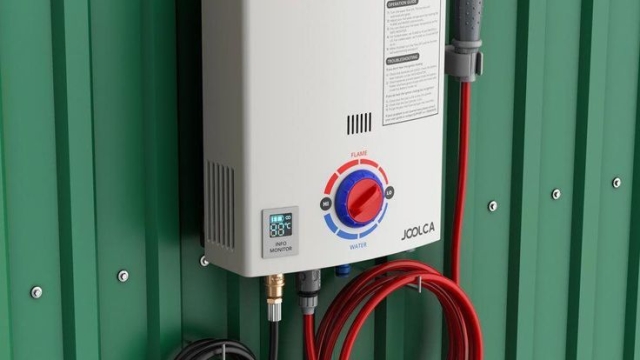In the ever-expanding world of cannabis, there is a journey that takes place behind the scenes, from the moment a seed is planted to the final product that finds its way into the hands of consumers. With each step along the way, the cannabis supply chain plays a vital role in ensuring quality, safety, and accessibility. From cultivation to processing, distribution, and retail, this intricate network of operations brings this versatile plant from seed to smoke.
At the heart of the cannabis supply chain is the cultivation process, where skilled growers carefully nurture and tend to the plants, providing the ideal environment for them to flourish. It all begins with selecting the right strains and sourcing the highest quality seeds or clones. From there, the cultivation process involves providing the plants with the optimal conditions for growth, including proper lighting, temperature, humidity, and nutrition. This stage requires expertise, constant monitoring, and attention to detail to ensure robust and healthy plants.
Once the plants have reached maturity, they are harvested and undergo a series of meticulous steps to transform their raw form into a variety of products. Processing facilities utilize various extraction methods to obtain cannabinoids, terpenes, and other valuable compounds from the plant material. These extracts serve as the foundation for an array of products such as oils, edibles, topicals, and more. The meticulous processing ensures that the desired qualities of the cannabis are preserved while removing any impurities.
The next leg of the journey involves distribution, where the processed cannabis products are carefully packaged and transported to dispensaries or other retail outlets. This stage requires compliance with regulations and delivery of products in a safe and efficient manner. Distributors play a crucial role in ensuring products are properly labeled, stored, and transported while adhering to the strict guidelines governing the cannabis industry.
Finally, the cannabis products reach the hands of consumers through retail establishments, where knowledgeable staff provide guidance and education on the different strains, consumption methods, and potential effects. Dispensaries act as the link between producers and consumers, offering a diverse selection of cannabis products tailored to meet the needs and preferences of individual users. Through the retail experience, consumers can fully explore the vast potential of the cannabis plant and discover the products that best suit their desires.
From the moment a cannabis seed is planted, to the careful cultivation, meticulous processing, and seamless distribution, the cannabis supply chain showcases how a natural plant can become a product that brings relief, pleasure, and wellness to consumers. As legalization and acceptance of cannabis continue to grow, understanding the intricacies of this supply chain becomes increasingly important for all those involved in its journey from seed to smoke. This guide serves as a valuable tool to shed light on the fascinating behind-the-scenes operations that make the cannabis industry thrive.
###1. Cultivation and Harvesting
The cultivation and harvesting of cannabis plants are essential steps in the cannabis supply chain. This process involves several stages, including planting the seeds, nurturing the plants, and ultimately harvesting the mature cannabis buds.
To begin, the journey starts with selecting the right cannabis seeds for cultivation. Different strains possess unique characteristics and qualities, such as potency, flavor profiles, and growth requirements. Cultivators carefully choose the ideal seeds to meet their specific goals and preferences.
Once the seeds are chosen, they are planted in suitable growing mediums, such as soil or hydroponic systems. The plants require proper care and attention for their healthy development. This entails providing them with the right amount of water, nutrients, and light throughout their growth cycle.
As the cannabis plants progress through their vegetative and flowering stages, cultivators meticulously monitor their growth. They ensure that the plants receive adequate light exposure, maintain appropriate temperature and humidity levels, and protect them from pests or diseases.
When the plants reach their full maturity, it is time for the crucial harvesting process. Cultivators carefully handpick the cannabis buds, ensuring each plant is harvested at the optimal time. The maturity of the plant is determined by factors such as the appearance of trichomes and the desired THC or CBD levels.
Overall, cultivation and harvesting are the foundational stages of the cannabis supply chain. These steps lay the groundwork for the subsequent stages of processing and distribution, playing a vital role in producing high-quality cannabis products.
2. Processing and Extraction
In the cannabis supply chain, once the plants are harvested and dried, the next crucial step is processing and extraction. This step involves transforming the raw cannabis material into a variety of different products that are available to consumers.
The first step in the processing and extraction process is the removal of the plant material from the cannabis flowers. This is typically done using specialized machinery that separates the flowers from the stems and leaves. Once the flowers have been separated, they can be processed further to obtain various forms of cannabis products.
MI Metrc
One common method of extraction is through the use of solvents. These solvents, such as ethanol or butane, are used to dissolve the cannabinoids and other desired compounds from the flowers. The resulting solution is then filtered to remove any impurities before being evaporated to create a concentrated form of cannabis extract.
Another popular extraction method is known as CO2 extraction. In this process, carbon dioxide gas is used under high pressure and temperature to extract the cannabinoids and other beneficial compounds from the cannabis flowers. This method is favored by many due to its ability to produce a highly pure and concentrated extract.
Once the extraction process is complete, the resulting cannabis extract can be further processed to create a wide range of products such as oils, tinctures, edibles, and topicals. These products undergo additional steps to ensure quality, consistency, and safety before they are packaged and ready for distribution.
Processing and extraction play a vital role in the cannabis supply chain, as they allow for the creation of various cannabis products that cater to the different preferences and needs of consumers. Whether it’s for medicinal or recreational purposes, the processing and extraction step is where the raw cannabis material is transformed into the diverse range of products available in the market today.
3. Distribution and Retail
In the cannabis supply chain, the distribution and retail stages play a crucial role in bringing the product to consumers. Once the cannabis products are cultivated, harvested, and processed, they are ready to be distributed to various retail outlets.
Distribution involves the transportation of cannabis products from the cultivation and processing facilities to the retail locations. This can be a complex task due to the need for compliance with legal regulations and ensuring the safe handling of the products. Licensed distributors are responsible for ensuring that the products reach the retailers in a secure and efficient manner.
Retail is the final stage in the cannabis supply chain, where consumers have the opportunity to purchase their preferred cannabis products. Licensed retailers play an essential role in the distribution by providing a wide range of cannabis products to meet consumer demands. They must adhere to strict regulations to ensure compliance and safety.
The retail experience in the cannabis industry can vary depending on the jurisdiction. Some regions have dedicated cannabis dispensaries where consumers can browse and purchase products in-person. In other areas, online retail platforms offer a convenient way for consumers to order their desired products and have them delivered to their doorstep.
Overall, the distribution and retail stages of the cannabis supply chain ensure that consumers have access to a variety of cannabis products while ensuring that safety and compliance standards are met. These stages are vital in bringing the journey of cannabis from seed to smoke full circle.


